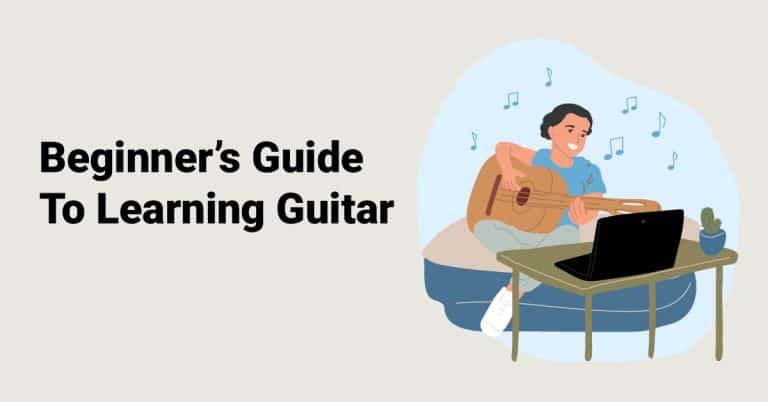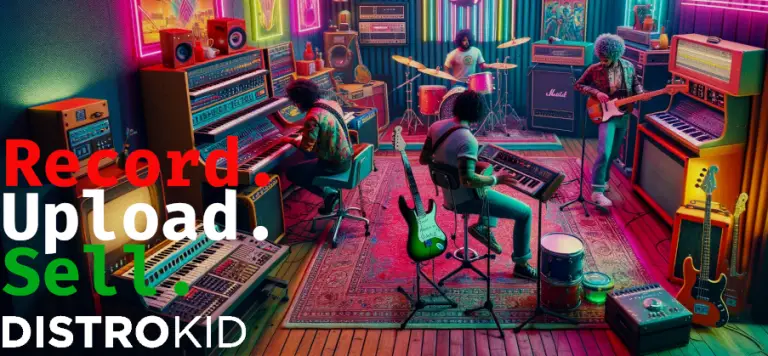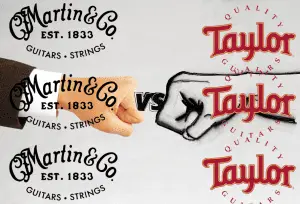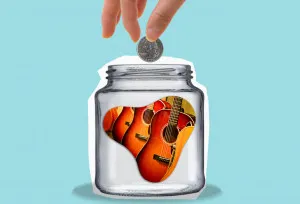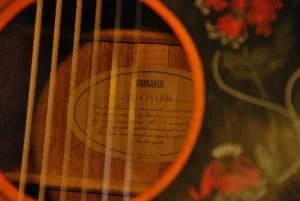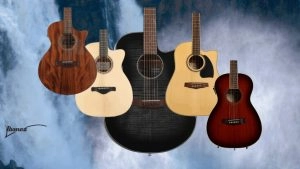So, you want to learn how to play guitar?
Whether learning to play guitar is something you are considering and want to learn more about, or you already have the guitar in front of you and just need some guidance, we are here to help you on your guitar journey. We will start from a place of zero knowledge, for a complete beginner’s guide to learning guitar. So don’t worry if you are completely new to the world of music and guitar.
Which Guitar Is Right For Me?

You may already have a guitar with you, but it’s still worth knowing the different types of guitars too. If you haven’t got a guitar yet, you may want to consider the kind of music you want to learn how to play first. Then decide on the type of guitar.
Generally speaking, this musical instrument can be split into two types – an acoustic or electric guitar.
Acoustic Guitars
Acoustic guitars are arguably the original guitar type, relying on the acoustics of the wooden body to amplify the sound, without the use of electricity. No matter how you engineer the body of these guitars, they are not as loud as an electric.
Acoustic guitars are generally made from wood and are usually completely or semi-hollow. The ‘sound hole’ in the middle of the guitar is what creates the amplification. This is because of the tone of the wood and the way the sound waves interact with the wood itself.
There are many types of acoustic guitars that serve different purposes. Their main differences are in the body shape and how the acoustic amplification is affected as a result.
These guitars are best for personal playing or playing for a small crowd. No one is ripping face-melting heavy metal guitar solos on an acoustic guitar, they are much better for genres like country, pop, folk, blues, and indie.
Having said that, there are many great acoustic songs by metal bands. And probably even more acoustic intros to heavy metal and rock songs:
Although you can certainly amplify electric guitars, electro-acoustic guitars also have the capacity for electric amplification.
Electric Guitars
Electric guitars were invented after acoustics. These guitars are commonly a solid block of wood that is not hollow but instead has a series of electric wiring and connections within the wood. This connection allows you to interact with the tone of wood while you play the guitar.
As there is no hollow entry for the sound to bounce off, you need amplifiers to hear the music.
There are generally more components in an electric guitar, such as the ‘pickup’ which are the mechanisms that convert the vibrations of the guitar strings into electric signals that are then amplified. These guitars will also have a volume knob as well as other dials that can affect the pickups or which pickup you use.
If you want to play guitar solos, strum heavily distorted guitar chords, and modulate the sound of the guitar through pedals and different amps, then the electric guitar is for you.
If you want to be the lead guitarist in a band and play shows, then go straight for these guitars. It’s the ideal instrument for heavy metal, rock, and jazz.
What Equipment Will I Need To Play Guitar?

When you buy your guitar, there may be a few extra bits of kit you may want. These additions aren’t necessary, but if you want to play the guitar to the best of your ability, they will be worth looking into.
Guitar Picks – Many choose to start learning with a guitar pick, sometimes called a plectrum. It is a hard piece of triangular plastic that helps you hit the guitar strings with more velocity and amplification. They are more commonly used with electric guitars, as many choose to play acoustic with only their fingers.
Guitar Strap – Most, although not all, guitars will have the ability to attach a strap. This can be worthwhile if you plan on playing live. A guitar strap simply lets you stand up and move around while having both hands free to play the guitar.
Capo – A capo is a clamping mechanism that essentially shortens the guitar neck – it’s a bit of advanced equipment for beginner guitar players, so it may not necessarily be needed. However, many players use it regularly. A capo may be necessary to play certain songs in the pitch that was intended.
Guitar Tuner – Guitar tuners exist to make life easier. It can be worthwhile to learn how to tune by ear, but this can be hard, so a tuner basically does this for you and will actually help you learn to tune by ear.
Guitar Amp – If you have an electric guitar, you may want to invest in a small practice amp to get used to the amplification of your specific guitar. This will also help you become familiar with basic guitar effects usually included in these amps, such as distortion or reverb.
There’s no point in having an electric guitar without an amp. You generally want something simple when you start, but guitar amps become very complex and unique as you advance.
How To Hold A Guitar

How you hold your guitar is actually really important to how you play the guitar. For the sake of simplicity, the directions will be given as if you were right-handed. Just invert this for left-handed players.
If you have never touched a guitar before, your initial thought may be to grip it by the neck itself, but this is wrong. The body of the guitar wants to be clamped between your strumming arm and your upper body, freeing up your picking hand, rather than your strumming arm.
Whether you are sitting down or playing with a strap, the same rules apply. Sitting down, you use your right knee to support the guitar to free your hands, while the strap operates the same way your knee does when you’re standing up.
Your right arm, the one you strum with, is super important and brings stability when playing. Your forearm should generally rest above the bridge at the highest point of your guitar. This frees up everything below the elbow on your arm to interact with the strings freely, while also being able to strum up and down with your forearm as the point of contact and stability.
The grip between your elbow and your side, with the guitar body sandwiched in between, is what frees your left arm to make chord shapes. If you didn’t have this grip between your side and your arm, then your fingers would have to work much harder to create shapes. Developing this grip naturally is important as without it you can develop habits that can end up causing more strain on your fingers in the long run, making it harder to learn.
Having a straight posture is really important too. As beginner guitarists, you will naturally hunch over your guitar to get a better view of your finger position. This can help you see better but develops bad habits you want to avoid.
Bad posture makes bad guitar players with sore backs.
How To Tune Your Guitar
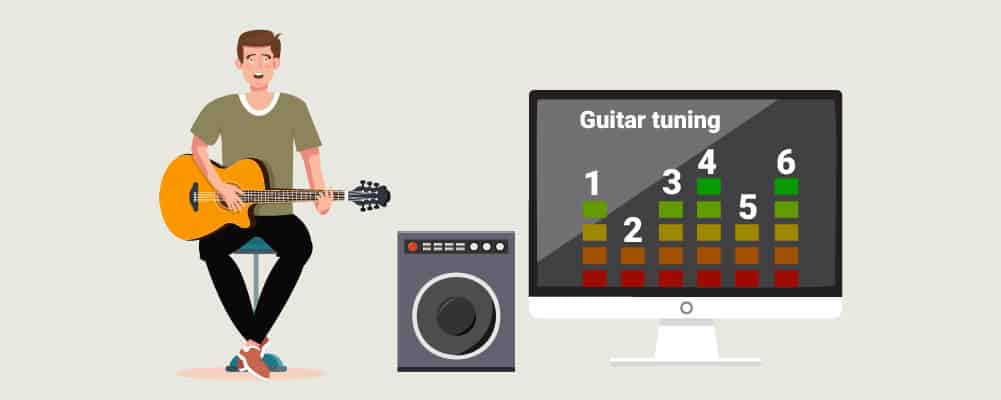
There are a few different ways to tune your guitar. The way a guitar works is that each string, in addition to its thickness and material, is tuned to a different note to help play guitar chords and melodies. In standard tuning, a guitar should be tuned to EADGBE. There are some common forms of alternative tuning used in many popular songs, but as a beginner learning how to tune to standard is the most important.
The original way to learn how to tune is to know what these individual notes sound like. You can learn this by listening to these notes individually. Try turning the tuning peg up or down the pitch in order to match the necessary note for that string. Being able to recognize a D chord or note in a vacuum is really hard and even the most veteran musicians struggle to do that, so matching it while you hear it played through an external source is the closest most will get.
The easiest way to tune your guitar is to buy a guitar tuner that helps you visually match the pitch on the physical tuner itself. Equally, there are apps for your phone that can do this too. It is much easier to recognize when your guitar is out of tune and amend it this way when necessary.
Your guitar might drop out of tune as a result of lots of playing or from knocking it against something.
Basic Finger Exercises
As we mentioned, dexterity is important when playing guitar. As you get better, the flexibility of your finger joints will increase, and you will develop strong muscles in your hands allowing you to reach further and hit more complex guitar chords. Don’t forget about posture here, it is all linked.
By exercising your hands and fingers every day you will naturally become a better guitar player by building up muscles as well as muscle memory. Particularly focusing on using your fingertips is really important. Your fingers should never be flat on the neck unless playing barre chords. Learning how to press the strings with stability and accuracy is really important.
Learning To Play Guitar Chords

So, when you play guitar, there are generally three ways you can interact with the strings. There are chords, single notes, and open notes. An open note is when you play one string without pressing any note on the fretboard. If you hit the first string you would get an E.
A single note is when you play only one string, but you may be changing the pitch of that note by applying pressure to any fret on the neck. For example, moving from the fourth to the third fret.
Chords are two or more notes played together in turn. With chords, you can play each note individually to create a melody, or you can play all the strings, or a select few, together to play the whole chord at once.
One thing to remember when learning chords is your finger position within a fret. To really let that note sing, your finger should be as close to the metal divider between each fret as possible. It shouldn’t touch the fret bar itself.
Ideally, you want only the flesh of your finger to make contact with the string, which means you can’t really play with long nails on your fretting hand, as when this makes contact with the string it creates a horrible noise.
Playing The Strings

You will notice that guitar books mention each string by its place on the neck. The thickest string should be at the top, closest to your head, while the thinnest string should be at the bottom, closer to your legs.
The first string is at the bottom, the second string is one up, followed by the third string, the fourth string, the fifth string, and finally, the thick E string, which is the sixth.
How you play a melody is totally up to you. A common method is to pick single strings in a sequence. This is known as ‘picking’.
Or, you play multiple strings at one time which is known as ‘strumming’. Even within this dichotomy, you can choose whether you use your right-hand fingers to pick and strum or if you use a pick.
Fundamentally, the difference isn’t that big in terms of sound, so choose what you’re most comfortable with. Most beginners will start playing with a pick as they haven’t developed calluses on either hand, but many people learn guitar by using only their fingers.
A callus is scar tissue that will commonly form through friction on the tips of your fingers as you play guitar very often. You will notice with longer practicing sessions, your fingertips get pretty tender; the more you play, the more these tips develop a hardness to them that is actually very beneficial for both fretting and fingerpicking.
Fingerpicking is usually reserved for the more acoustic-heavy genres, particularly in anything folk or country-inspired. Bob Dylan’s ‘Don’t Think Twice It’s Alright’ is a classic example of someone finger-picking. It also demonstrates how fingerpicking is used in ways that can’t be replicated with a pick. With your picking hand, you essentially have five picks, your fingers, so hitting the number of strings necessary in a fingerpicking pattern is nearly impossible with a pick.
The flip of this is picking, which is super common with electric guitars. Not many people play electric without a pick. Soloing involves playing a complex sequence of picking patterns and other techniques for plucking the strings. Just look at any Van Halen song, but particularly Eddie’s performance here of ‘Eruption’ to see how different techniques can be used in one solo.
One thing Van Halen arguably popularized is tapping. Tapping is an advanced technique where you hammer the strings with the fingers of both hands to play fast melodic lines and successions of notes that would be very hard to play with a pick.
When you’re learning to play, you will ache to solo, but this skill takes time to develop.
How To Hold A Pick
Now let’s jump into some guitar basics. One thing that many beginners fail at is holding a pick correctly. Again, learning how to do this properly at the start of your guitar journey can help prevent bad habits from forming.
Your initial reaction when given a pick may be to clamp it flat between the fleshy parts of your forefinger and thumb, directing it toward the strings – this is the wrong way.
The harder you clamp the pick, the more velocity it hits the string with. We don’t necessarily want full-velocity strumming on the strings of the guitar. The pick will likely fly out your hand, and the noises you’ll make won’t be very pleasant to the ear.
You, perhaps counterintuitively, want to hold the pick as lightly as possible without letting go. Rather than using the fleshy part of your forefinger, you actually want to balance it on the side of your index finger with your thumb over the top so the apex of the pick’s point protrudes from the side of your thumb. This allows your wrist to perform the right movement over the strings, helping to control the velocity at which you hit each string.
How To Approach Learning A Song
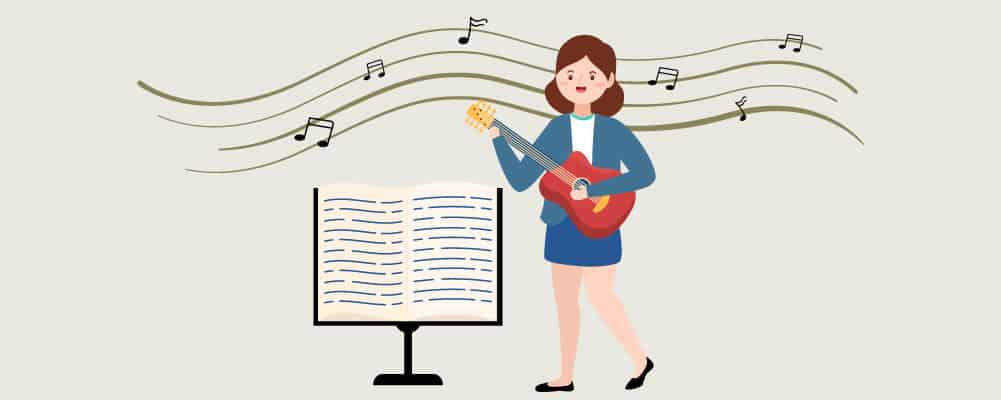
So now that we know all the integral but individual elements for playing a guitar, the next step is learning to play songs on it. There are a few ways to learn a song that can be more or less suitable for a particular player.
Learn Guitar Through Visuals
On the one hand, if you are a visual learner, watching someone play guitar may be enough for you to figure out certain chords and strumming patterns. YouTube, as always, is a great resource for finding someone teaching a specific song and its chords and strumming patterns.
Learn Guitar By Ear
If you have little experience with any music theory or instruments, this will be pretty hard. Yet, if you are coming to guitar from piano or something similar, you may be able to hear chords well.
When listening to your favorite songs you may be able to pick out the chord progressions by ear. However, you should listen to other musicians too, not just the bands you like.
This can help you sense how different chords create different genres or atmospheres. The more songs you listen to, the more you will pick up on these details. Even the backing tracks can help you become a guitar pro.
Learn Guitar Through Diagrams
Chord Diagrams, sometimes called grids, are probably the most simple way to learn chords.
These grids are a bird’s eye view of the fretboard. The vertical lines represent the strings, and the horizontal lines represent the fret bars. Large dots indicate the finger positions on each fret necessary to play the chord.
As previously explained, chords consist of multiple notes played at once. There will sometimes be numbers under the chord diagram indicating which finger to use. You may also see a title such as “C chord” to indicate the name of the relevant chord.
The more you play guitar chords, the more you get used to them and you will soon learn them by heart, knowing the exact fingering position for the G major chord or B flat.
You can either learn these diagrams through guitar lessons or through a chord book for beginners.
These books will also discuss correct hand positionings, such as the placement of the middle finger, pinky finger, ring finger, and index finger. They also discuss common chords for beginners, such as the open “CAGED” chords.
Playing chords with the root note on the sixth string can be difficult when first-timers play the guitar, but a guitar teacher can help you navigate that stretch.
For example, the guitar teacher may give your exercises or suggest specific chords which fit your current finger-stretching ability. This means you may not be able to play your favorite songs from the get-go, but you will still learn to play the guitar – just at a slower pace. Some of the most popular chords, (such as open D and open C) will be easier to play without much practice, but mastering the G open chord or barre chord might take some time.
As your middle finger and index finger becomes stronger, chords with the root note on the fifth string may not be as hard to play, giving you more opportunities for learning complex songs.
All songs have a chord progression you can follow. Simply playing the chord progression of your favorite song is good beginner practice to get used to good posture, chord changes, and timing. As you learn guitar, these chord progressions will become second nature to you.
Learn Guitar Through Strumming Patterns
Okay, now that you know a few basic chords for the song you want to learn, you may want to figure out the strumming pattern, which is really important. In the beginning, it may be easier to just play chords once per bar and let them ring, so you can get used to timing and finger position before anything else.
Strumming patterns are often given in song transcriptions but even when you can read them, it can still require another listen to the song, or watching someone play, to really get an idea of the rhythm of the patterns. Most songs will generally have a sequence of up and down strokes that are unique to that song.
Palm muting is something to be aware of when strumming. This is most common with electric guitars, especially in metal and heavy rock, but can be used on any guitar in any genre. A palm mute is when you let the palm of your right hand just touch the strings while you pick or strum, creating a muted sound. A palm mute may be noted as a ‘pm’ in tablature.
Learn Guitar Through Reading Tablature
Tablature, commonly referred to as tabs, is one way you can learn to play a song. Tabs are particularly useful to learn the more complex bridges or even a specific guitar solo as they are really good at mapping out specific notes and directions for playing
Tabs are pretty easy to read. They are often crowd-sourced and usually made by fans who are writing from what they hear. These can be more or less accurate, but be aware that there may be quite a few tabs for the song you like.
Ultimate Guitar is an amazing resource for tabs that uses an up-voting system like Reddit to allocate authority to the best tabs for a certain song.
When you look at a tab, you will see a set of five horizontal lines stacked on top of each other. The first line represents the first string (thinnest E string), and the bottom line represents the sixth string (thickest E string).
Each note will then be indicated by a number on a certain string. The number corresponds to the fret you should play on that string. So if the top string has a 4 on it, you play the fourth fret of the low E string – you play the notes from left to right like reading a book.
There are some other notations worth pointing out in the tablature. An open note on a string is indicated by a simple ‘0’, meaning don’t play any frets. A hammer-on is indicated with an ‘h’ next to the first number, while a pull-off is indicated with a ‘p’, and a bend in the note is indicated with a ‘b’. If a slide is needed, it is usually indicated between two numbers with either a ‘/’ or a ‘\’ depending on the direction of the slide itself.
Learn Guitar By Using A Metronome
A metronome is a tool that you can use to keep time. The speed and rhythm of most songs are judged by a mathematical measure known as beats per minute. The number of beats per minute will judge how fast a song is. For example, ‘Stairway To Heaven‘ is around 82 BPM.
So, for example, if you wanted to practice the famed solo in ‘Stairway To Heaven,’ using a metronome will help you keep time. You can set the metronome to 82 BPM and it will click in time with the rhythm of the song as it was recorded.
Playing with a metronome is a great way of developing your rhythm skills in every situation. It will help you keep time appropriately both in the studio and in live performances. Other musicians you play with will appreciate this — as well as your audience when you’re performing solo, without more experienced musicians or backing tracks you can lean on for keeping time.
Practice Makes Perfect
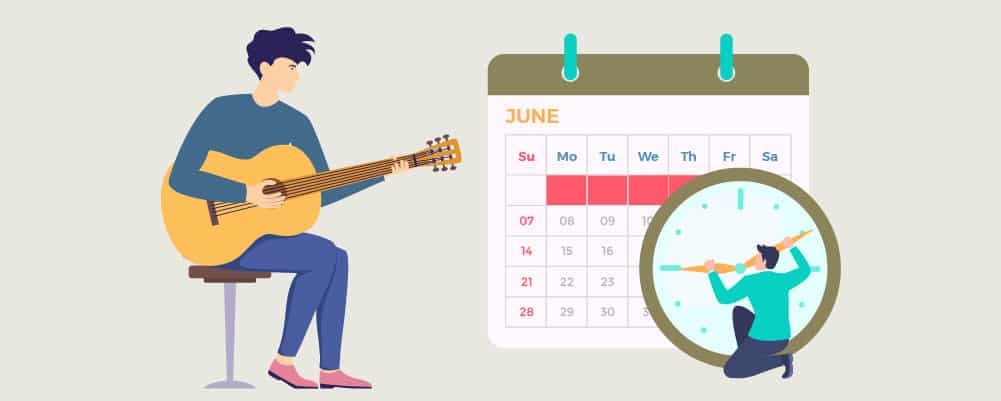
Like any skill, accessibility, and practice are really important. Consider learning a language. Practicing phrases will help, but immersing yourself in the context of that language will lead to proficiency more than anything else.
This is the same with the guitar. Don’t be that person who keeps it under their bed. Get yourself a guitar stand and put it by your desk, in your living room, or wherever you spend the most time. Next time you are procrastinating at work or waiting for your ride to turn up, you should automatically pick your guitar and get that useful practice in. Learning how to play takes time, and these little snippets can be the difference between getting better and losing interest.
You can even take up weekly guitar lessons to help you stay focused on this dream. Even if you prefer to learn solo with online lessons, an in-person guitar lesson every now and then can help you learn faster.
If you have an electric guitar, make sure to buy a small, portable practice amp, so you can plug in your guitar wherever you are.
Our point is if the guitar is just within reach and simply requires you to pick it up, you will practice more often and learn quicker. If you have to get it out of the case from underneath your bed or in the garage, it just won’t happen as often. Regular practice is essential to improving your guitar skills.
Final Thoughts
This guide should prepare you for everything you might face when learning how to play guitar as a complete beginner – from choosing a guitar to reading guitar tablature.
You don’t need to know everything about music theory or the ins and outs of your guitar’s build. Instead, focus on practicing your favorite songs, and the right techniques. That’s more than enough to learn how to play guitar.
There is no right way to learn guitar. Some people choose a theory-heavy approach, while others can pick it up with zero prior experience. If you get stuck, bored, or frustrated with something, simply switch things up and change your approach.

